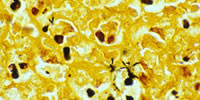Tick-borne Disease in Animals
The following guide contains general information about tick-borne infection in companion animals. It is not intended to be a diagnostic tool. Diagnosis and treatment of animals should only be performed by a veterinary surgeon who should consult current literature and pharmacological formularies before initiating any treatment protocol.
Ticks can carry a variety of pathogens concurrently and so it is very important to check for multiple infections when a tick-borne disease is suspected.
Prevention is far preferable to cure. Please view our Tick Prevention page for the best methods of protecting your pets.
There are many different tick-borne diseases worldwide and therefore it isn’t practical to list them all. In this guide we concentrate purely on infections that can be acquired from British ticks, and diseases reported in pets returning to Britain under the Pet Travel Scheme, which ended in January 2012:
Anaplasmosis / Ehrlichiosis
Anaplasma and Ehrlichia species parasitize the white blood cells of many animal species. Learn the symptoms of infection in dogs, cats and horses.
Babesiosis
Babesia species parasitize the red blood cells of their hosts. Find out which species can affect our companion animals and how infection can be treated.
Bartonellosis
Bartonella infections are often found in cats and dogs without any apparent symptoms but sometimes they do get sick. Learn what tests and treatment are currently used.
Borreliosis (Lyme disease)
Borreliosis can cause serious disease in pet animals. Find out how an infection can be diagnosed and treated.
Rickettsia felis -Cat Fleas
Cat fleas are also implicated in transmission of Rickettsia felis, a worldwide, low-grade zoonotic disease causing anaemia.
The risk of importation of Equine Piroplasmosis into the United Kingdom. Defra surveillance report 2009 – http://www.aht.org.uk/skins/Default/pdfs/equine_vol5_3_focus2.pdf









